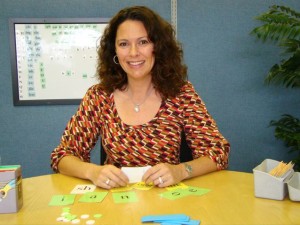
by PRIDE Reading Program Admin | May 26, 2016 | A PRIDE Post, Reading Comprehension
Is your child having difficulties with reading comprehension? Need a reading comprehension strategy that helps your child understand what they have just read?
Well, try using the SWBS reading comprehension strategy. It is our favorite reading comprehension strategy.
Somebody – Wanted – But – So
The SWBS is a fantastic and easy to implement reading comprehension strategy that helps children understand plot elements such as conflicts and resolutions. It also allows the child to summarize the elements of a story and develop the summary into a retelling of the story. It can be used as a “during reading” or “after reading” strategy. I also like to use it as a quick reading comprehension assessment with my students.
The SWBS reading comprehension strategy is basically a summarizing technique. Summarization requires a student to pull out the main idea, focus on key details, use key words and phrases, and break down the larger ideas. Summarizing is an extremely difficult task for most students. Many children require instruction and practice in summarizing before they are able to produce good oral and written summaries of text. The SWBST strategy helps children first orally summarize what they have read and then put the summary down onto paper into paragraph form. It works with both fiction and nonfiction text. So here is how it goes:
Somebody – Wanted – But – So
Procedure:
1. Have your child read a story (independently or with help is fine)
2. Write down the following:
Somebody…
Wanted…
But…
So…
3. Fill in the sentences together with your child relating to the story that they just read. Somebody relates to the character of the story. Wants is the goal or motivation that the character exhibits. But refers to the conflict in the story. So is the resolution of the conflict. Do it first orally then in written form.
4. Have your child write out the sentences in a paragraph form. Younger students can add just one sentence while older students can add detail with 1-3 sentences.
It is AWESOME – right? The key to getting your child to memorize this summary form is through repetition. Doing it just one time won’t work. Doing it all year long – it will “stick.” Good Luck and let me know how it goes…

Learn more about the New PRIDE Reading Program
___________________________________________________________________________________________
Karina Richland, M.A. is the Founder and Director of PRIDE Learning Centers, located in Los Angeles and Orange County. Ms. Richland is a certified reading and learning disability specialist. Ms. Richland speaks frequently to parents, teachers, and professionals on learning differences, and writes for several journals and publications. You can reach her by email at karina@pridelearningcenter.com or visit the PRIDE Learning Center website at: www.pridelearningcenter.com

by PRIDE Reading Program Admin | May 8, 2016 | A PRIDE Post, Reading Skills
It is critical to identify a child’s reading problems before he or she fails. Even some children whom one might suspect do not need early assessment and monitoring should have it just the same. Some exceptionally bright children, for example, may learn to read early on and just skip over learning phonologic skills. These children memorize a lot of words very easily and quickly build a large reading vocabulary. Because these children are simply memorizing words without learning how to analyze them and break them apart, invariably there will come a point in time when they cannot decipher new, relatively long words, especially technical words, as in the sciences (Herbivore, Polynomial, Photosynthesis), or names of people or places in history or around the world (Picasso, Timbuktu, Kathmandu).
Without a foundation in phonological skills, these children will not have any strategies to deal with them. It is therefore best to ensure that all children’s basic phonologic skills are assessed right at the beginning and that they receive early and intensive instruction if necessary.
Here is a checklist to help you determine where your child is on the path to reading by the end of kindergarten.
- Knows that spoken words come apart and that letters represent these sounds.
- Easily names the letters of the alphabet, both uppercase and lowercase.
- Writes the letters of the alphabet.
- Can sound out the letters of the alphabet – both uppercase and lowercase.
- Can decode simple sound matches.
- Can decode simple 3 and 4 letter words.
- Uses invented spellings.
- Recognizes some common sight words.
- Knows about print conventions – reading from left to right, from the top of the page to the bottom.
- Has a growing vocabulary
- LOVES to read and looks forward to reading out loud.
First grade is one of the most important for a child on the road to reading. This is the crucial year where hopefully your child has broken the reading code. First grade builds on the foundation provided in kindergarten. Most children enter first grade ready to read. They leave first grade as “real readers.” Keep in mind that these major accomplishments don’t occur by chance; they are only made possible by well -structured and systematic reading instruction. If your child has the above-mentioned skills, then he or she is off to a running start in reading!
Learn more about the New PRIDE Reading Program
________________________________________________________________________________________________________

Karina Richland, M.A. is the Founder and Director of Pride Learning Centers, located in Los Angeles and Orange County. Ms. Richland is a certified reading and learning disability specialist. Ms. Richland speaks frequently to parents, teachers, and professionals on learning differences, and writes for several journals and publications. You can reach her by email at karina@pridelearningcenter.com or visit the Pride Learning Center website at: www.pridelearningcenter.com

by PRIDE Reading Program Admin | Apr 20, 2016 | A PRIDE Post, Articles & Resources
Yes! A child can overcome reading problems if they are identified early and provided with the correct reading intervention program.
If your child is having troubles learning to read, take immediate action. Research in the field of reading says that the ideal window of opportunity for helping kids with reading problems is from the beginning of kindergarten to the end of first grade. This is still called intervention. After this window of opportunity has passed it is called remediation. Keep in mind that prevention is always easier than remediation.
The three key research conclusions from the National Institutes of Health are:
- 90% of children with reading problems will achieve grade level in reading if they receive help by the first grade.
- 75% of children whose help is delayed to age nine or later continue to struggle throughout their school careers.
- If help is given in fourth grade, rather than in late kindergarten, it takes four times as long to improve the same skills by the same amount.
Dr. G. Reid Lyon, Chief of the Child Development and Behavior Branch of the National Institute of Child Health and Human Development of the National Institutes of Health concluded that if children are identified early and provided with systematic, explicit, and intensive instruction in phonemic awareness, phonics, reading fluency, vocabulary, and reading comprehension strategies they can overcome their reading problems.
The type of intervention program a child uses is also crucial. On the basis of a thorough evidence-based review of the reading research that met rigorous scientific standards, the National Reading Panel (NRP), convened by the NICHD and the Department of Education, found that instructional programs that provide systematic instruction in phonemic awareness, phonics, guided repeated reading to improve reading fluency, and direct instruction in vocabulary and reading comprehension strategies were significantly more effective than approaches that were less explicit and less focused on the reading skills to be taught (e.g., approaches that emphasize incidental learning of basic reading skills).
Learn more about the New PRIDE Reading Program
______________________________________________________________________
Karina Richland, M.A. is the Founder of PRIDE Learning Centers, located in Southern California. Ms. Richland is a certified reading and learning disability specialist. Ms. Richland speaks frequently to parents, teachers, and professionals on learning differences, and writes for several journals and publications. You can visit the PRIDE Learning Center website at: www.pridelearningcenter.com

by PRIDE Reading Program Admin | Apr 10, 2016 | A PRIDE Post, Reading Comprehension
Many students with Learning Disabilities process information differently. They may be unaware of simple reading comprehension strategies that strong readers use automatically, such as rereading passages they do not understand.
Students with learning disabilities typically recall less about stories they have read and cannot easily identify the important information in them. Here are a few reading comprehension strategies that can be used either at home or in the classroom to help students with learning disabilities comprehend and understand text.
Retelling
Retelling is a frequently used process that involves asking students to recall and restate the events in a story after they have read it or heard it. Teachers or parents should first model the different parts of the story for the student. For example, starting a story by saying “once upon a time,” and then prompting the student to retell the story by asking:
- Who is the story about?
- Where does the story take place?
- What is the main character’s problem?
- How does the main character try to solve the problem?
- How does the story end?
Theme Scheme
The use of a theme scheme during explicit instruction in reading comprehension will help students transfer the strategies they learn to novel texts. The Theme Scheme includes the following steps:
- Introduction and pre-reading discussion: The teacher defines the concept of THEME and introduces the background of the specific story for that lesson.
- Reading the story: The teacher reads the story aloud, stopping to ask questions designed to encourage the student to process the theme.
- Discussion: The teacher and student discuss the following questions:
- Who is the main character?
- What is the main character’s problem?
- What did the main character do about the problem?
- What happened next?
- Was that good or bad?
- Why was it good or bad?
- The main character learner that her or she should _____________.
- Apply the theme to other story examples and to real life experiences: The teacher introduces another story that provides another instance of the same theme. The teacher and student discuss the example using the above 7 questions plus:
- When is it important to ________?
- In what situation is it easy/difficult to ________?
- Review: The teacher reviews the above questions and asks the student to think about other examples.
A follow up activity: The teacher leads a follow-up enrichment activity, such as writing, drawing, discussion, or role- playing.
Predicting
In this activity, the teacher reads a story to the student or has them read the story aloud. The teacher stops the reader before getting to the story’s resolution. Then the teacher asks the student to predict what comes next in the unfinished story. Another option is that the teacher can provide a list of possible endings from which the student can choose.
Cloze Activity
The teacher removes a portion of text from the middle of a story and then has students fill in the missing information. To optimize the benefits of this approach, it is valuable to discuss the types of information that would be anticipated. For example, the teacher might remove the description of the problem faced by the characters in the story. The teacher then could show the student a story map and then ask the student what aspect of the map is not obvious in the story. The student can brainstorm possible problems that would make sense, given the other information presented in the story.
The above strategies are designed to enhance reading comprehension and have been used to teach students with learning disabilities, with promising results. Students struggling with reading comprehension can achieve gains, including the ability to transfer what they have learned to novel texts, when they are given highly structured and explicit instruction in reading comprehension.
Learn more about the New PRIDE Reading Program
________________________________________________________________________
Karina Richland, M.A. is the Founder of PRIDE Learning Centers, located in Los Angeles and Orange County. Ms. Richland is a certified reading and learning disability specialist. Ms. Richland speaks frequently to parents, teachers, and professionals on learning differences, and writes for several journals and publications. You can visit the PRIDE Learning Center website at: www.pridelearningcenter.com

by PRIDE Reading Program Admin | Feb 8, 2016 | A PRIDE Post, Reading Fluency, Reading Skills
Reading is a skill that needs to be practiced regularly. Without practice, young readers will not develop the vocabulary, the skills, and the fluency necessary to become strong readers. But many children, even those with strong reading skills, do not get enough practice and as a result become disinterested in reading, and can quickly become discouraged. Here are some practical tips for when your chid doesn’t want to read:
- Find books with cartoons or humor — which only a child would find amusing.
When your child doesn’t want to read… don’t make everything a learning lesson. Letting children read books such as Captain Underpants or Diary of a Wimpy Kid will keep them engaged and entertained. Although adults might find the language and humor distasteful, children find it very funny and are therefore more motivated to read.
- Zero in on your child’s passions and choose books and magazines focused on areas of interest.
If your child doesn’t want to read try finding books on specific topics to keep your child’s interest, such as science, baseball, American Girl dolls, etc. Children who already have the background knowledge, language and vocabulary before beginning a book will have an easier time getting through the reading. Order a magazine subscription to Sports Illustrated for Kids or Nickelodeon. Children love receiving mail and reading ‘their’ magazines.
- Get your child an email account and, together, check it regularly.
Using the computer to read and write is a huge advantage for most students. By letting young children write and send email, they practice reading, writing and spelling. Teach your child how to use spell check before sending off messages. Be sure to monitor your child’s ‘pen pals’ – who is your child writing to and receiving mail from? Let your child pick out a few family members, including grandparents and maybe two or three friends. You will find that by using email regularly, your child becomes very strong in typing (keyboarding) and using the computer.
- Find an author that your child likes and stick with it.
If your child loves reading Hank Zipzer by Henry Winkler or Tales of a Fourth Grade Nothing by Judy Blume, then you have found a writing style which stimulates your child’s interest. Go through the entire series. Don’t worry if the reading is below grade level: your child is reading for pleasure and for practice. Also remember, just because you loved a certain author or series when you were a kid, this doesn’t mean your child will love the same books you did. Browse the bookstore or library and find the newest, most modern series. Usually these books contain language and themes to motivate the most reluctant reader. Kids need to relate to what they are reading, and modern language usage helps.
- Let your child talk to you about the book they are reading.
When we adults read books we enjoy, we like to talk about them. After reading a book, we don’t necessarily want to write a summary, book report or make a project of it. We just want to discuss it with someone else. Look interested in what your child is reading (yes, even if it is Captain Underpants) and ask questions and have your child tell you about it. Laugh with your child about the funny parts (even at the bathroom jokes) and help your child feel good about reading.
Learn more about the New PRIDE Reading Program
__________________________________________________________________________________________________________
Karina Richland, M.A., E.T. is the Managing Director of Pride Learning Centers, located in Los Angeles and Orange County. Ms. Richland is a reading and learning disability specialist. Ms. Richland speaks frequently to parents, teachers, and professionals on learning differences, and writes for several journals and publications. You can visit the Pride Learning Center website at: www.pridelearningcenter.com
Page 3 of 7«12345...»Last » 






